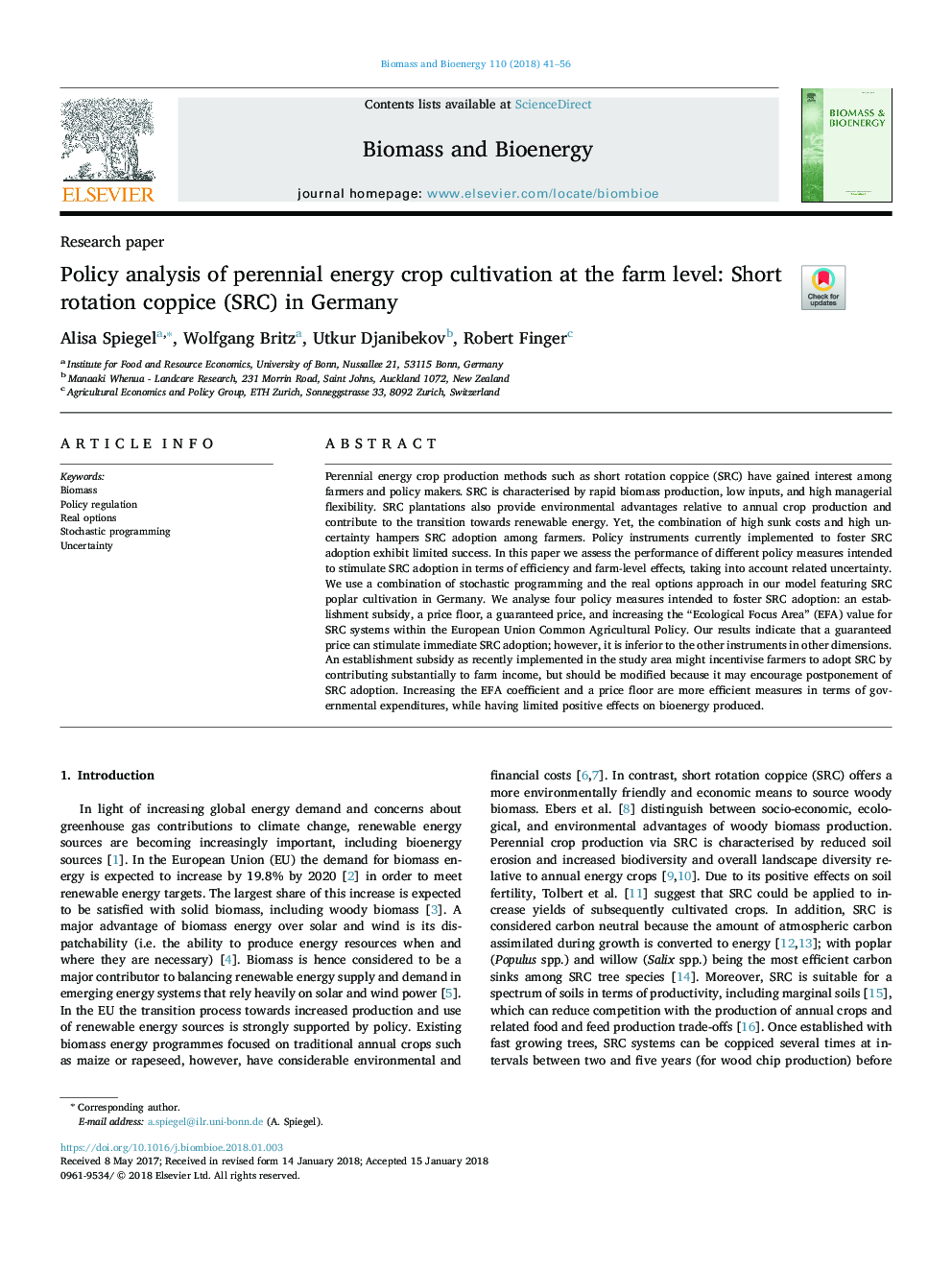| Article ID | Journal | Published Year | Pages | File Type |
|---|---|---|---|---|
| 7062997 | Biomass and Bioenergy | 2018 | 16 Pages |
Abstract
Perennial energy crop production methods such as short rotation coppice (SRC) have gained interest among farmers and policy makers. SRC is characterised by rapid biomass production, low inputs, and high managerial flexibility. SRC plantations also provide environmental advantages relative to annual crop production and contribute to the transition towards renewable energy. Yet, the combination of high sunk costs and high uncertainty hampers SRC adoption among farmers. Policy instruments currently implemented to foster SRC adoption exhibit limited success. In this paper we assess the performance of different policy measures intended to stimulate SRC adoption in terms of efficiency and farm-level effects, taking into account related uncertainty. We use a combination of stochastic programming and the real options approach in our model featuring SRC poplar cultivation in Germany. We analyse four policy measures intended to foster SRC adoption: an establishment subsidy, a price floor, a guaranteed price, and increasing the “Ecological Focus Area” (EFA) value for SRC systems within the European Union Common Agricultural Policy. Our results indicate that a guaranteed price can stimulate immediate SRC adoption; however, it is inferior to the other instruments in other dimensions. An establishment subsidy as recently implemented in the study area might incentivise farmers to adopt SRC by contributing substantially to farm income, but should be modified because it may encourage postponement of SRC adoption. Increasing the EFA coefficient and a price floor are more efficient measures in terms of governmental expenditures, while having limited positive effects on bioenergy produced.
Related Topics
Physical Sciences and Engineering
Chemical Engineering
Process Chemistry and Technology
Authors
Alisa Spiegel, Wolfgang Britz, Utkur Djanibekov, Robert Finger,
